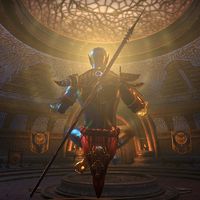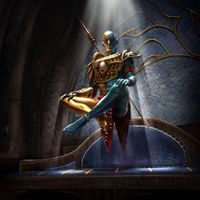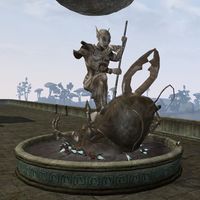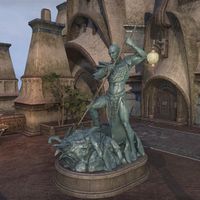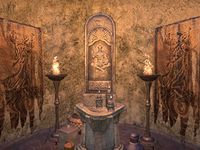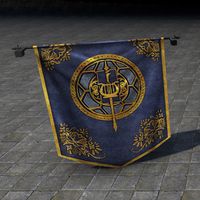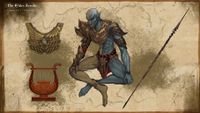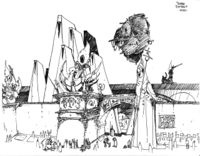Lore:Muatra
Muatra,[nb 1] meaning Milk Taker, is a spear wielded by Vivec, one of the living gods of the Tribunal.[1] In his younger years, Vivec had a chance encounter with the Hortator of the Chimer Indoril Nerevar, telling Nerevar that he would make a legend of the netch longhook in his possession and that it would be his weapon of choice in Nerevar's guard.[UOL 1] The longhook was in his possession from the days of his youth where he bonded with his father Irdri who was a netchiman by trade.[2][UOL 2]
During the event known as the Pomegranate Banquet in which Vivec and Molag Bal made an unholy union, Vivec noticed his body was tenderly used and pointed this out; Molag Bal replied, stating that his love was accidentally shaped like a spear. Vivec bit new words onto Molag's spear so it could give more than ruin.[1] Disaster was struck when the Chimer, Demons, and Monsters who bore witness to this took out their spears and imitated this biting which caused the earth to crack, spawning a new terrible race that was born of the biters and caused destruction. Vivec, however, had learned a new secret from Molag Bal when he had bitten him, and thus was able to change his own spear into a more terrible thing.[1]
Vivec named his new spear Muatra. The spear in this new form had the ability to turn anyone Vivec touched with it barren and wither them to bones.[1] Vivec used Muatra to destroy many things, including: the biters and their progeny;[1] his own progeny he created with Molag Bal, including eight particularly powerful children who escaped his initial wrath; the last of the N'chorbal, which were terrible rock-skin bugs native to Vvardenfell;[UOL 3] and, according to some legends, even Nerevar himself.[UOL 4] Muatra, along with Vivec's Lyre, is often depicted in shrines and tapestries as the harp and spear are symbols of Vivec.[3][4][5]
Gallery[edit]
Notes[edit]
References[edit]
- ^ a b c d e 36 Lessons of Vivec, Sermon 14 — Vivec
- ^ 36 Lessons of Vivec, Sermon 37 — Vivec
- ^ Shrine of Warrior-Poet in ESO
- ^ Brass Cufflinks of Vivec contraband item in ESO
- ^ Tapestry, Vivec, Banner, Vivec, Indoril Banner, Vivec, and Indoril Carpet, Vivec furnishing items in ESO
Note: The following references are considered to be unofficial sources. They are included to round off this article and may not be authoritative or conclusive.
